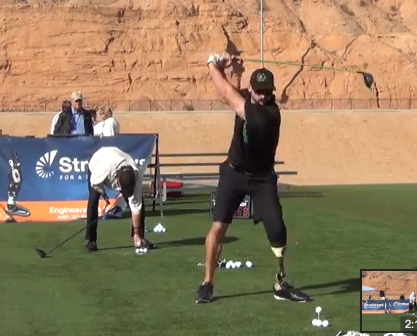
 Website
Website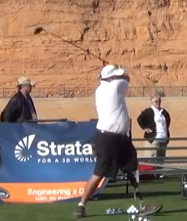
The ParaLong Drive Cup is a long drive golf championship event for athletes with permanent illnesses, injuries and other physical challenges. Among the athletes whose abilities are showcased are those who with challenges such as amputation, paraplegia, brachial plexus injury, cerebral palsy, blindness, autism, traumatic brain injury and Down syndrome. Athletes compete in various categories (determined by their physical challenges) in order to take home the title of ParaLong Drive Cup Champion.
Sports Destination Management: The ParaLong Drive is different from other golfing events.
Dean Jarvis: Well, it’s not a typical golf tournament. It’s long drive only.
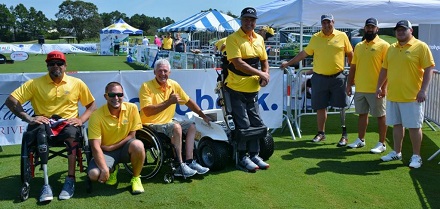
Jarvis: We started in July 2013. The first time we hosted it, it was the Amputee Long Drive Championship and I was hoping there might be between six and 10 hitters. We had 10 people that time. The second time, we had questions from people with other disabilities. I remember a man telling me he had brachial plexus injury, which impairs the upper body and obviously changes your ability to swing a golf club the same way other people do. We didn’t have a category for that at the time, but I said, ‘Well, just show up and for the event and I’ll figure it out.”
SDM: So you added new categories?
Jarvis: We’ve gradually branched out and added different divisions because we have been getting more and more people with different levels of disabilities. For example, once we added a division for arm amputees, we had to break in down it into people with just one arm who swung one-handed, and people with a prosthetic arm that is designed to connect to a club. That would be part of our Assisted category. In terms of lower body amputees, you might have people who have below-the-knee amputations, through-the-knee amputations, above-the-knee amputations – it all affects what you do to some degree, which means you want special divisions there too.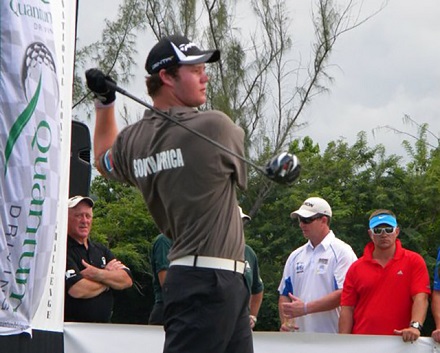
SDM: What other categories have you added?
Jarvis: What haven’t we added? We’ll have our first player with Down syndrome in our next event. We have divisions for blind and visually impaired golfers. We also have a division for people who use a Paramobile which is a one of the greatest machines ever. If you’re paralyzed, it raises you into a standing position. It was developed by Anthony Netto, who is a golfer with paralysis. And one of the big problems with paralysis is that people are always in a seated position and there are health problems associated with that. Being able to stand, it helps with everything – your muscles, joints, digestion and more. But when you think about it, it’s not just good because a person can navigate around a golf course; it’s something that allows them to hug a spouse, look people in the eye – it’s absolutely huge from a self-esteem perspective. The two things you can’t buy are self-esteem and self-confidence. Think of all the things that spiral downwards if you don’t have those.
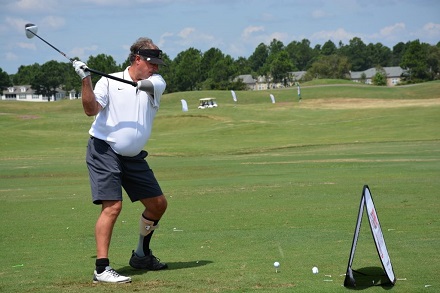 SDM: Do you have a division for veterans?
SDM: Do you have a division for veterans?
Jarvis: We keep it integrated. The goal is to bring these athletes together to compete. I’d say about 30 percent of our athletes are wounded veterans but to us, everyone is an athlete. If you’re a civilian, we want you. If you’re a veteran, we want you. If you’re blind, have autism, have a traumatic brain injury, whatever, we want you.
SDM: Being able to introduce people to golf – or reintroduce them to it – must be incredibly rewarding.
Jarvis: I’m always hearing people say, ‘I never thought I could golf again.’ There have been plenty of athletes who thought their ability to enjoy sports and especially to engage in competition was over.
SDM: Is ParaLong Drive a division in the Paralympics?
Jarvis: No – there’s no golf in the Paralympics at all, which is really bad. When I heard that golf was approved for the Olympics, it was right after I’d played in the amputee national championships and I was really glad, thinking we’d see Paralympic golf in Rio. But I did a little bit of research and learned it had been rejected as a Paralympic sport.
SDM: Isn’t there an organization with oversight that would have lobbied for it?
Jarvis: The USGA was instrumental in golf's inclusion into the Rio Olympics after an absence of over 100 years, but they did not bother to expend any effort toward helping disabled golf reach the Paralympics. The governing body operates at least 13 amateur and professional golf championships annually, but they have never operated, attended, endorsed, or financially assisted a disabled golf tournament or championship.
The absence of the USGA in competitive disabled golf seemed to suggest that athletes with physical injuries, illnesses, and challenges should not aspire to engage in competition. That conflicts with one of the main goals of The ParaLong Drive Cup, which is to provide competitive opportunities for athletes with disabilities.
The ParaLong Drive Cup has been a catalyst to show that athletes with disabilities deserve opportunities to showcase their talents in competition. Thankfully, the USGA appears to be following ParaLong Drive's lead. They recently attended the R & A Symposium on Golf for the Disabled to learn how to take their first steps to operate disabled golf tournaments and championships in the future.
There isn’t anything for golfers with physical disabilities in the USGA. Until I started this, I didn’t know there was this huge divide. But there are all these big ‘Growing the Game’ kind of organizations and initiatives, and they want to introduce people to the sport and get them out on the driving range and into competition – but they don’t do anything to introduce the sport to people who have disabilities. In fact, those organizations – the USGA and so on – nobody really has anything in terms of competitions. But we’ve seen that when we bring these people out to participate and compete, it just ignites something inside of them. I don’t know why the bigger organizations can’t see that.
SDM: If people are long drive champions, it takes a special kind of skill.
Jarvis: Our longest hitters possess the swing speeds that are not far behind the longest hitters in professional long drive. The top swing speeds in professional long drive are in the 225 MPH range, and the top swing speeds in ParaLong Drive are in the 200 MPH range. Jared Brentz hit the ball 409 yards back at a ParaLong Drive event in 2014. Last year, at the Mile High Showdown in Denver, some of the top professional long drivers were getting close to 500 yards.
SDM: What kind of golf facility are you looking for when you’re trying to find locations for the ParaLong Drive Cup?
Jarvis: We can’t really use a regular driving range because the ball usually goes beyond that – far beyond that. The harder these guys hit, the harder it is to find that perfect location. We’ll be coming back to Mesquite, Nevada, to the Mesquite Sports & Events Complex. It is really the ideal setup for us because it 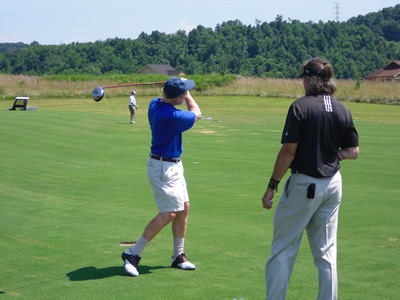 has sports fields laid out end to end in a kind of a grid. That’s perfect. We can have both a competition area as well as a practice area so the athletes can stay loose.
has sports fields laid out end to end in a kind of a grid. That’s perfect. We can have both a competition area as well as a practice area so the athletes can stay loose.
SDM: So you don’t use a golf course?
Jarvis: No – it wouldn’t work for this. A lot of our athletes do play on regular courses, though. With long drive, it’s a little different from golf. A golfer on the tour might be 5’8” to 5’10” tall, weigh 155 to 170 pounds. Our guys might be 6’4”, 6’5” and weigh 240, 250 – they look like NFL linebackers or bodybuilders. They have muscles coming out of their muscles and they spend a lot of time doing weight training at the gym. They are used to turning on the ball and hitting it hard. They might have backgrounds in other sports like baseball where they’re used to hitting the ball or pitching it really fast.
SDM: No wonder a regular golf course isn’t necessarily the best venue. Where else is the event held?
Jarvis: We have had three events in Mesquite, three in the Knoxville, Tennessee area, one in Winter Garden, Florida, and one in Myrtle Beach, South Carolina. In 2018, we’ll have another event in Mesquite in March and one in Columbia, South Carolina, in October.
SDM: What are you looking for when you host these events – in addition to having the required distance to hit?
Jarvis: Everything has to be accessible because this is an event for many people who are mobility-impaired in some
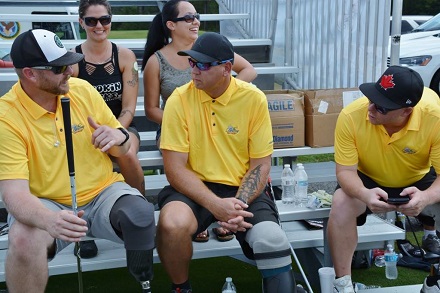
way. Top priorities for future events are finding handicap accessible lodging, and handicap accessible restrooms near the long drive grid and practice area. I have developed a great appreciation for event planners and organizers that understand the nuances to meet athlete’s needs inside, and outside the ropes. We have not always been perfect on every detail, but I’m proud that we are always striving to learn and improve our operations to get more athletes off the couch and onto the tee box.
SDM: If people are interested in hosting an event or being involved, how should they get in touch with you?
Jarvis: They can contact me through the website.
SDM: Do you see yourself expanding the event to include a traditional golf tournament?
Jarvis: I think we’ll stay with long drive. We’re a niche sport and I don’t really want to expand beyond that.
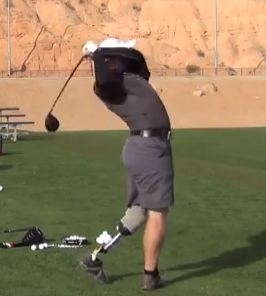
SDM: What surprises people most about ParaLong Drive?
Jarvis: Besides how far people can hit and the kind of obstacles they have overcome to be competing, I guess it would be the speed of these events. They are very quick. Our last one was finished in 97 minutes.
SDM: Definitely faster than a traditional golf tournament.
Jarvis: It’s one of the reasons a lot of people think the Paralympics would do better with ParaLong Drive. People have this idea that accessible golf is really complicated. It’s not. It just takes planning and there are more considerations. Another change in the way we do things is that we play rock & roll music – really up-tempo stuff like AC/DC and Lynard Skynard to keep people entertained. It’s not quiet like a regular golf tournament.
SDM: Are more people becoming aware of the ParaLong Drive Cup?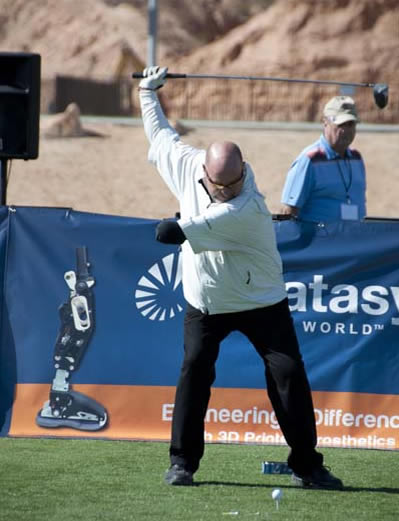
Jarvis: Yes, it has been featured on the Golf Channel, which brings it to millions of people. It also promotes and builds the sport of long drive, which is getting more recognition. We might have a really small window of time when it’s easier to get onto the channel to help fill a content void, but when people see our guys hitting over, say 400 yards, they think ‘I want to do that.’
SDM: A 400-yard long drive would inspire anyone, not just someone with a disability.
Jarvis: Yes, but here is something I noticed. The athletes who hit the ball the longest are generally the below-the-knee amputees and they lead the most normal lives. The ones who have more severe challenges, the people who have paralysis, brachial plexus injury and so on, they might hit the ball 200 yards but it inspires me more to see them. Those people have never quit, never stopped. They just keep going.

